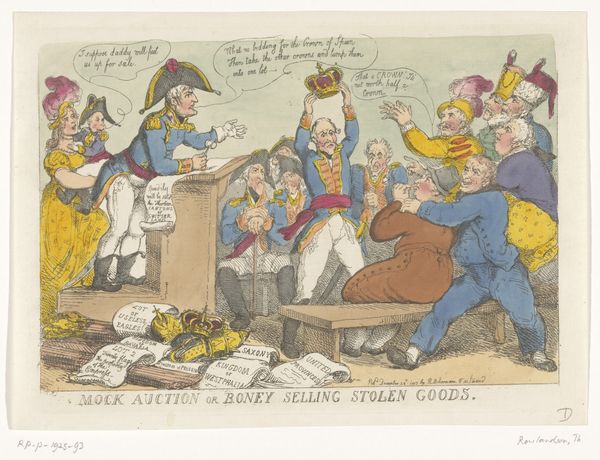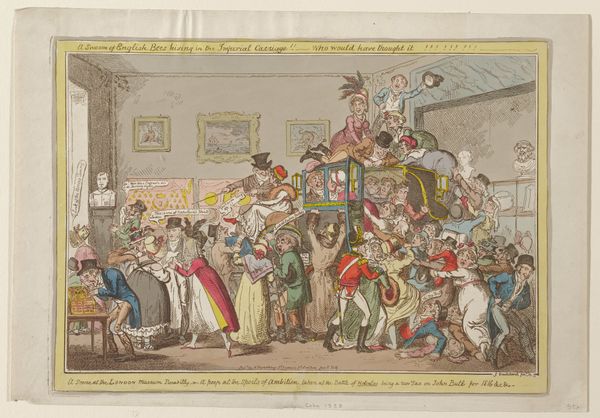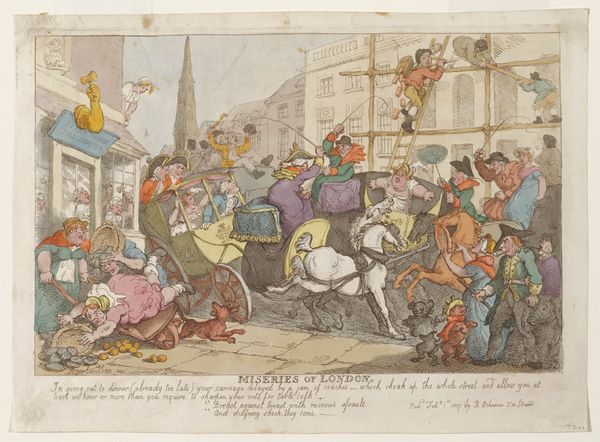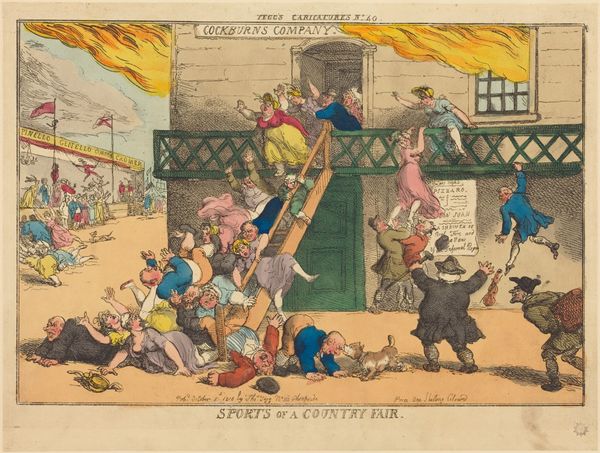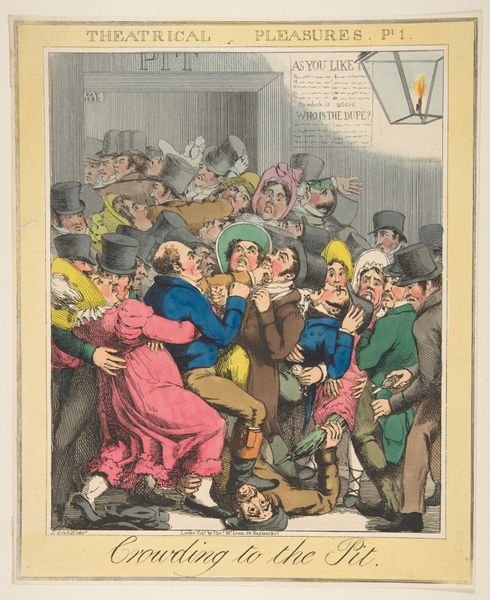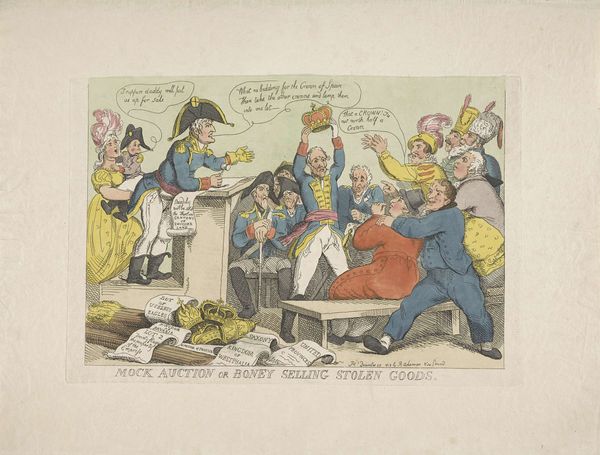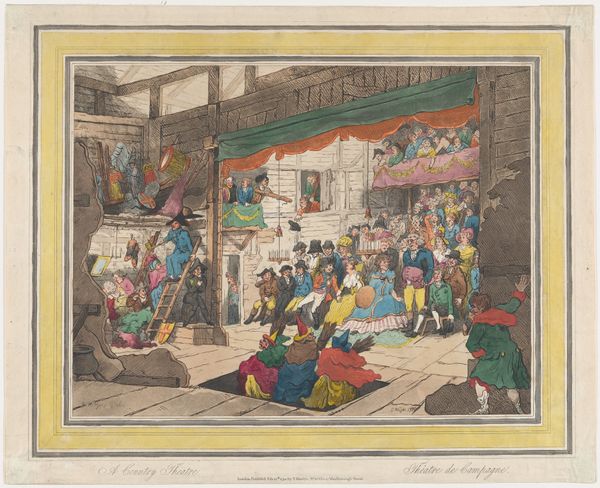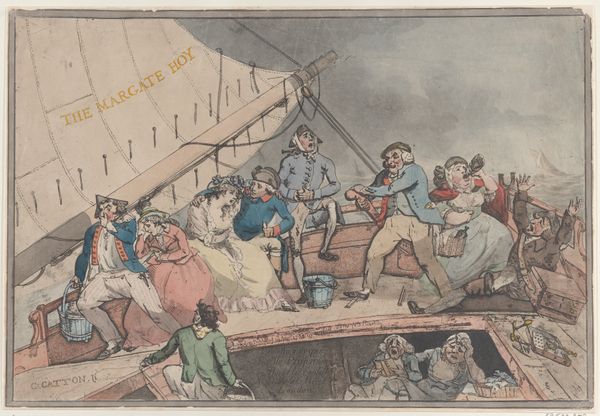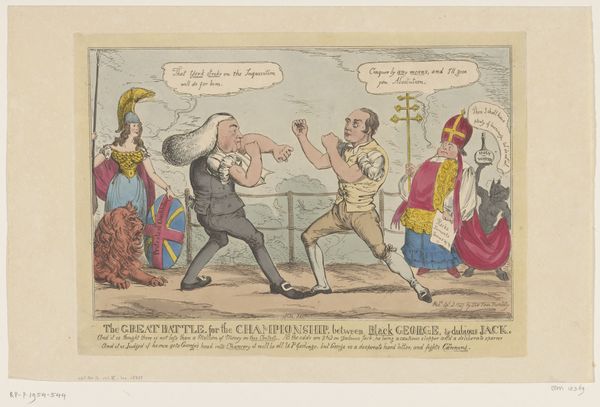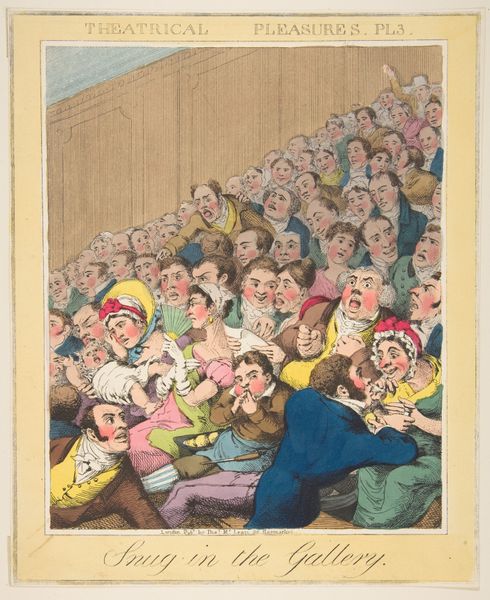
drawing, print, etching, paper
#
drawing
# print
#
etching
#
caricature
#
paper
#
romanticism
#
genre-painting
#
history-painting
Dimensions: 220 × 325 mm (image); 250 × 348 mm (plate): 255 × 392 mm (sheet)
Copyright: Public Domain
Editor: This is "Sports of a Country Fair. Part the Third," a print created by Thomas Rowlandson in 1810, now at the Art Institute of Chicago. It’s so chaotic! What strikes me is the almost slapstick comedy of the scene; a staged drama interrupted by some offstage catastrophe. What do you see happening here? Curator: Well, looking through the lens of its social context, this etching reveals a fascinating tension between performance, spectacle, and the anxieties of the era. Rowlandson often satirized the social order through his prints. Notice how the figures are caricatured, particularly the lower classes. This was a period when anxieties about social upheaval were palpable, with events like the French Revolution still resonating. Editor: So, is the 'catastrophe' – which, by the way, seems to be a tiger bursting through a wall – a metaphor? Curator: Precisely. Think about it: the performance, likely a theatrical retelling of a historical or mythological event, is interrupted by something 'wild' and uncontrollable. It reflects a fear of disruption, the breaking down of established norms. How do you think this image engages with ideas of social control and the role of spectacle in maintaining it? Editor: That’s insightful. The ‘performance’ seems staged, mannered. Then you have the 'tiger' erupting— raw, and disruptive. It really turns the idea of refined entertainment on its head! Is this commentary common in Rowlandson's work? Curator: Absolutely! Rowlandson frequently critiqued the superficiality of fashionable society and the perceived vulgarity of the masses, presenting scenes of public life with an almost journalistic eye. This piece cleverly conflates those elements. The staged scene is a backdrop, for what unfolds within a popular entertainment context of fairs. Do you see any irony? Editor: It makes me wonder, are we supposed to laugh at the chaos, or consider what societal "tigers" still lurk just beyond our constructed realities? Curator: Exactly. Rowlandson invites us to reflect on the fine line between order and chaos, performance and reality. I learned about his intention and humor to satirize the British class system while observing his caricatures of different members in the society! Editor: It has certainly shifted how I look at what once felt like just humorous imagery! Thank you!
Comments
No comments
Be the first to comment and join the conversation on the ultimate creative platform.

